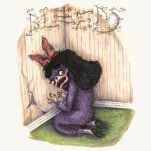Cat Person Puts Out the Short Story’s Fire with Gasoline

Kristen Roupenian’s “Cat Person” experienced a journey to the center of the cultural zeitgeist that few contemporary short stories will ever be allowed to make, and even fewer would survive. Thanks to social media, Roupenian’s sharply detailed third-person-close account of a romantic encounter that goes from awkward to clumsy to upsetting became an object of me-too virality and thinkpiece scrutiny, reaching the kind of audience who might well refer to a piece of literary fiction as “your article.” Roupenian’s subsequent story collection was naturally overshadowed by its most famous piece, but now she achieves the truest form of literary canonization: Her good fiction has been turned into a bad movie.
It starts off like a satirical follow-up to the Best Picture winner CODA; at the end of that film, a character played by Emilia Jones made a break from her loving but insular family and headed off to college. Here, Jones is university sophomore Margot, bantering about the dangers and indignities of young womanhood with her roommate Taylor (Geraldine Viswanathan) and approaching her part-time job at a townie rep-house movie theater with lightly sardonic humor. She performs the lightest bit of neg-flirting with Robert (Nicholas Braun), a tall customer in his thirties, and he expresses his interest awkwardly, first coming across as standoffish, then take-charge interested when he gets her phone number. Not coincidentally, we learn that his romantic model is Han Solo in The Empire Strikes Back.
This bad imitation of Harrison Ford cool becomes a pattern as Robert and Margot embark upon a tentative, initially mostly text-based courtship. In the story (to my admittedly male eyes, anyway), Robert is an insecure sad-sack whose interest in Margot flatters her. Braun makes Robert more obviously angry, more immediately imposing – too much too soon for such a small story – but the movie nails the lonely dynamics that cause plenty of people to be better at texting than in-person relationships. Margot’s texting persona gets closer to her genuine personality, with some added vulnerability that may turn out to be unwise; director Susanna Fogel, who made an astute study of female friendship with the underseen Life Partners, smartly depicts the cocoon of sorts that can form around two people engaging in a portable flirtation.
To fill out into a two-hour feature, Cat Person must populate the world outside Margot’s head, dutifully adding an uptight RA, a gaggle of theater kids, a prodding mother (Hope Davis), and, as Margot’s professor/mentor, Isabella Rossellini importing some of her Green Porno. Taylor is the most significant expansion, and its most misguided; Viswanathan is a wonderful performer, here stuck announcing and elucidating all of the movie’s ideas about feminism, power dynamics, and consent, as Margot’s relationship with Robert threatens to go IRL. (In what unfortunately counts as an act of Herculean restraint, Taylor doesn’t actually say “age-gap discourse.”) She repeats and underlines what the movie already conveys, and the tensions of closeness Fogel so smartly depicted in Life Partners don’t have the space to develop here.
-

-

-

-

-

-

-

-

-

-

-

-

-

-

-

-

-

-

-

-

-

-

-

-

-

-

-

-

-

-

-

-

-

-

-

-

-

-

-

-








































